The total solar eclipse will be here soon. Here's where you can plan to watch in Delaware
The next total solar eclipse in the United States, the first since 2017, arrives in a few months, and you don’t want to miss out.
If you’re eager to see the big event and wondering where in Delaware you can sit back and tune in, we’ve got you covered.
Here’s the rundown on what to expect with the total solar eclipse and where to watch it in Delaware.
What is a total solar eclipse?
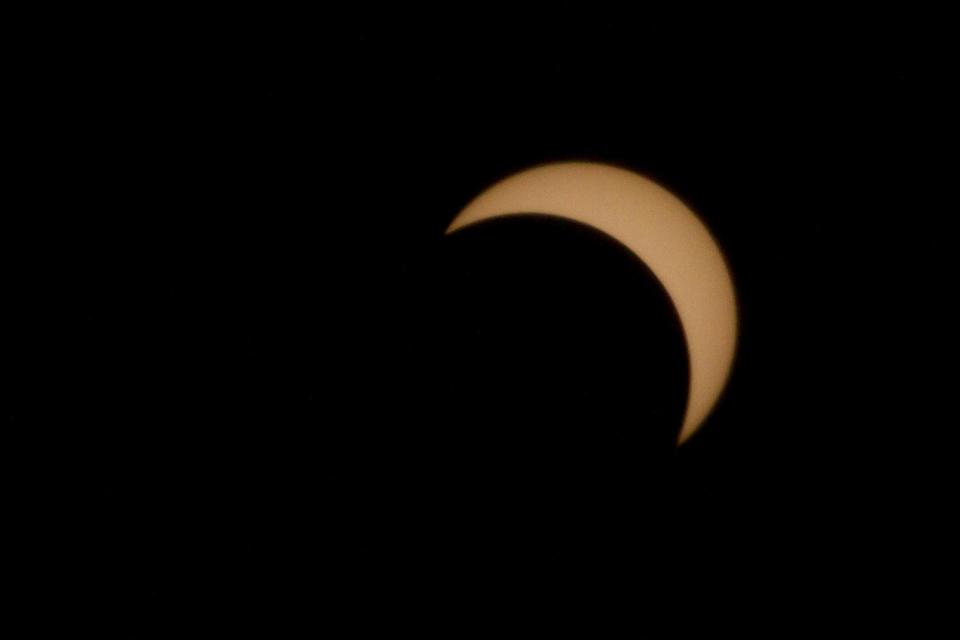
During a total solar eclipse, the moon passes between the sun and Earth and completely blocks the face of the sun, according to NASA.
No matter the time of day it is, the sky will darken as if it were dawn or dusk. Weather permitting, people along the path of totality will see the sun’s corona, the outer atmosphere, which is usually obscured by the bright face of the sun.
When is the total solar eclipse?
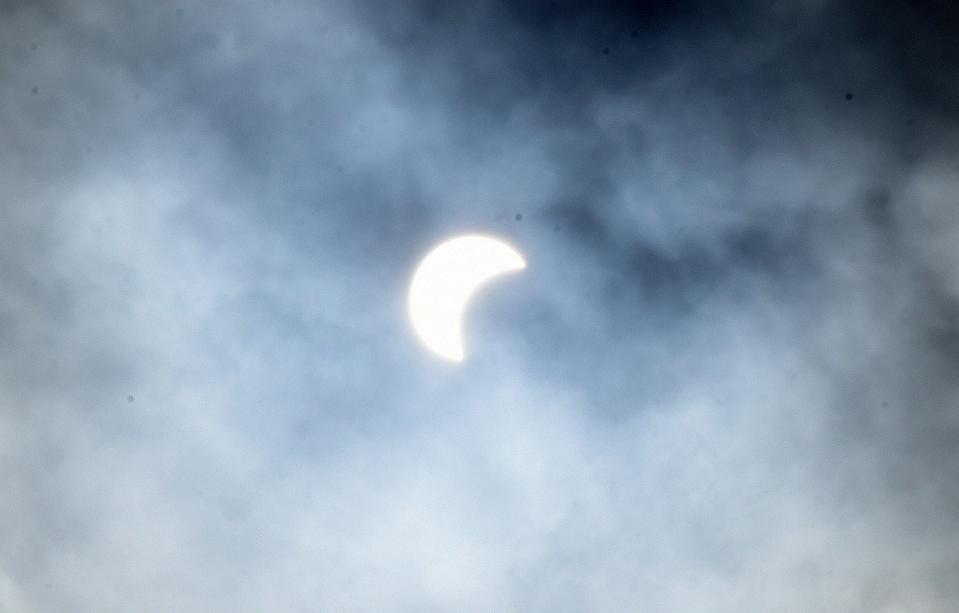
The next total solar eclipse is on Monday, April 8.
The duration of totality will last four minutes and 27 seconds, nearly double that of the total solar eclipse seen in the United States in 2017, according to Great American Eclipse.
Although the next total solar eclipse will be visible elsewhere on Aug. 12, 2026, if you miss out on April 8, the next total solar eclipse visible from the contiguous U.S. won’t arrive until Aug. 23, 2044.
What time will the total solar eclipse happen?
The path of totality — when the moon completely covers the sun, creating a total eclipse — runs from Mexico (Sinaloa to Coahuila) to the United States (Texas to Maine) to Canada (Ontario to Newfoundland), according to TimeandDate.com.
The following U.S. cities are in the path of totality, according to NASA:
Dallas, Texas
Idabel, Oklahoma
Little Rock, Arkansas
Poplar Bluff, Missouri
Paducah, Kentucky
Evansville, Indiana
Cleveland, Ohio
Erie, Pennsylvania
Buffalo, New York
Burlington, Vermont
Lancaster, New Hampshire
Caribou, Maine
Areas near these cities will experience a partial eclipse before and after the time totality is expected. A partial eclipse will be visible across nearly all of the U.S. and a small portion of western Europe.
Global eclipse events will occur at the following local times:
Partial eclipse will first be visible at 11:42 a.m.
Full eclipse will first be visible at 12:38 p.m.
Maximum eclipse will be visible at 2:17 p.m.
Full eclipse will last be visible at 3:55 p.m.
Partial eclipse will last be visible at 4:52 p.m.
In Delaware:
Partial eclipse begins at 2:07 p.m.
Maximum eclipse begins at 3:23 p.m.
Partial eclipse ends at 4:34 p.m.
The total solar eclipse will be visible at 4:41 p.m., which only 0.55% of the population, or 43.8 million people, will be able to see worldwide in areas where the eclipse is visible. As for any part of the eclipse, not just totality, 8.19% of the population, or 652 million people, will be able to tune in, according to TimeandDate.com.
Solar eclipse viewing safety
Do not look directly at the sun without eye protection specifically designed for solar viewing. Without protection, the sun’s radiation can burn the retinas in your eyes, leading to permanent damage or blindness.
Eclipse glasses can be purchased at a variety of retailers in-store or online, and you also can indirectly view the eclipse by using a pinhole projector.
The sun will be very bright during the eclipse, so if you plan to watch and will be in direct sunlight for hours, wear protective clothing, a hat and lather on sunscreen to prevent skin damage.
When the eclipse is at totality, this is the only moment you can briefly remove your eclipse glasses and look at the sun directly with your eyes.
Where to watch the total solar eclipse in Delaware
A partial eclipse is all that will be visible to the entire state of Delaware.
While various geolocating sites can help you find out when exactly you can check out the eclipse from your house, you might be interested in watching the phenomenon from elsewhere.
Some of our top picks here for star gazing also might be a good place to enjoy the total solar eclipse in April.
Your favorite local hangout
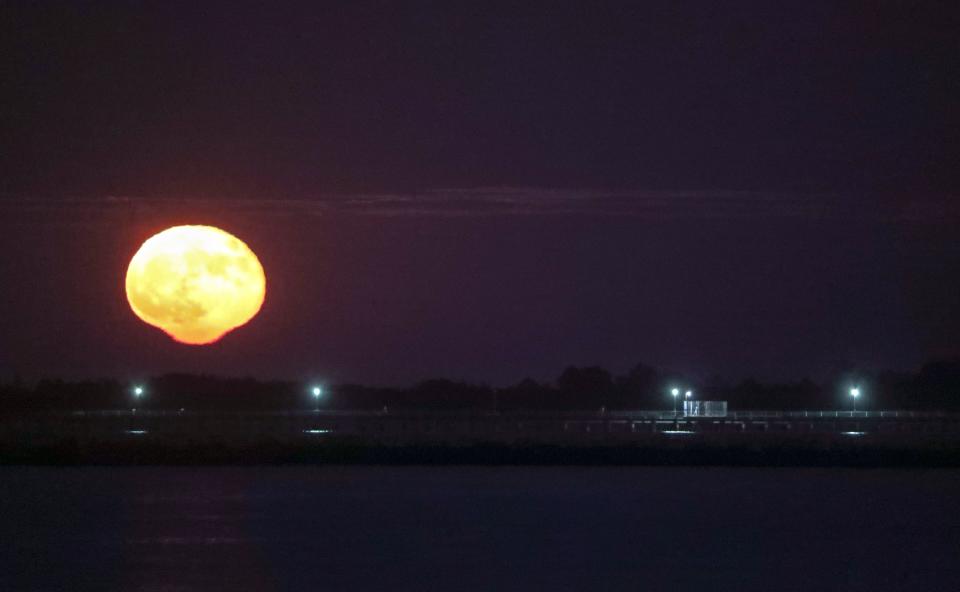
Delaware is teeming with parks and green spaces, and we bet you already have a go-to, so all that’s left to do is grab a blanket, pack some snacks and pick up a friend.
It might be a park in your neighborhood or it could be a quiet spot beneath a tree. Wherever you end up, be sure to heed notices about park closing times and property restrictions.
Delaware beaches, various locations
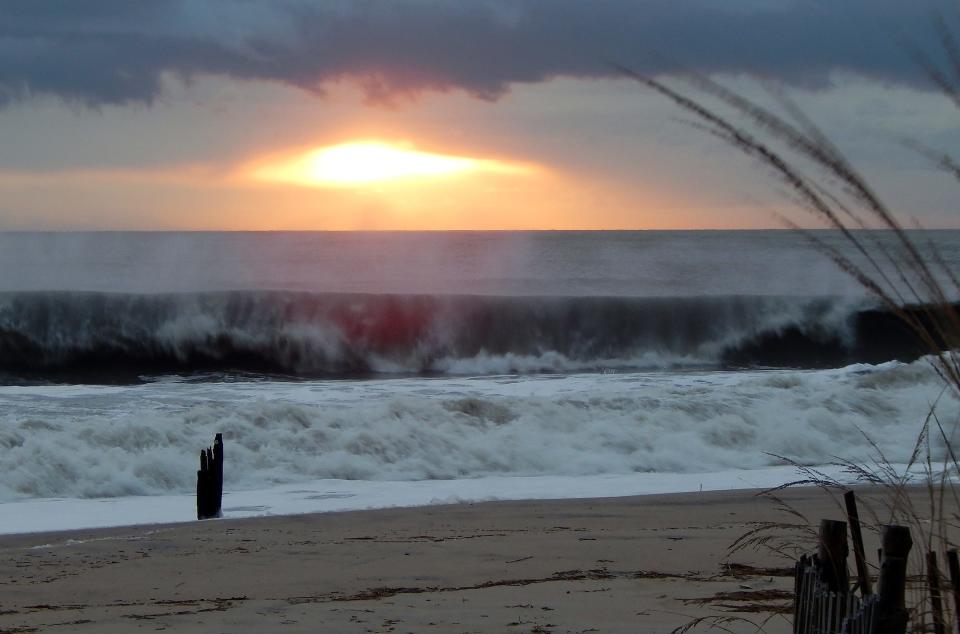
We know everyone says they like long walks on the beach under the moonlight in their dating profiles, but they may be on to something.
Grab your beach blanket and head down to the sand to enjoy a full moon, blood moon or shooting star. The sound of crashing waves is a bonus.
If you want the benefits of an oceanside sky show, but not the sand in your hair or shoes, consider catching the next meteor shower while on a stroll on the Rehoboth Boardwalk or parked on a bench with your ice cream or pizza.
Newark Reservoir, Newark
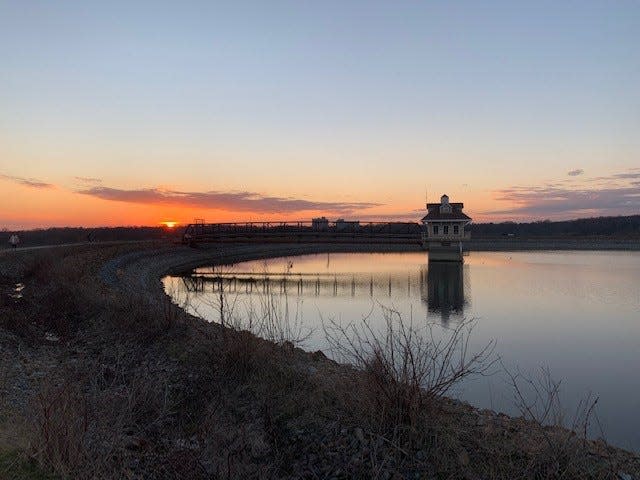
If you find that your area is a bit too obstructed by light pollution, the Newark Reservoir offers an elevated surface for you to be away from city lights and closer to the sky.
This serene spot would be a great mini getaway for catching a daytime eclipse with friends or watching the stars twinkle into view at sunset.
Your backyard
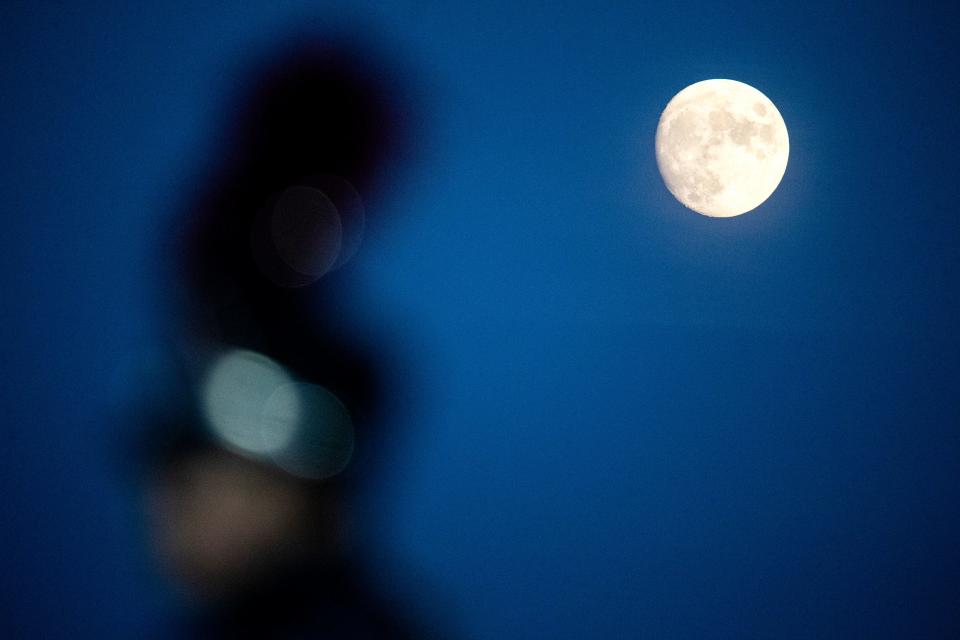
It may not be a drastic change of scenery but don’t sleep on the freedom of hosting a shooting star watch party in the comfort of your own backyard.
Not only do you have direct access to all the snacks you could want, but it’s less of a hassle to set up your telescope just a few yards from your back door than it is to lug it across town in your car.
You and your pals can set up a tent or give your yard a makeover with plenty of blankets, pillows and refreshments to go around.
Total solar eclipse details: A total solar eclipse will be visible in the U.S. this spring for the first time in 7 years
Wilmington Riverfront, Wilmington

The Christina River is no Atlantic Ocean, but we have to admit that the Wilmington Riverfront has a pretty decent boardwalk for us northern Delawareans who can’t make a late-night journey to the beach.
Fill up on tasty food and drinks at nearby restaurants before taking a post-meal trip to the Riverwalk. Get comfortable on one of the benches stationed along the way or lace up your shoes and walk the entire thing to catch the next Saturn appearance or guest visit from Jupiter’s moons.
Delaware state parks, various locations
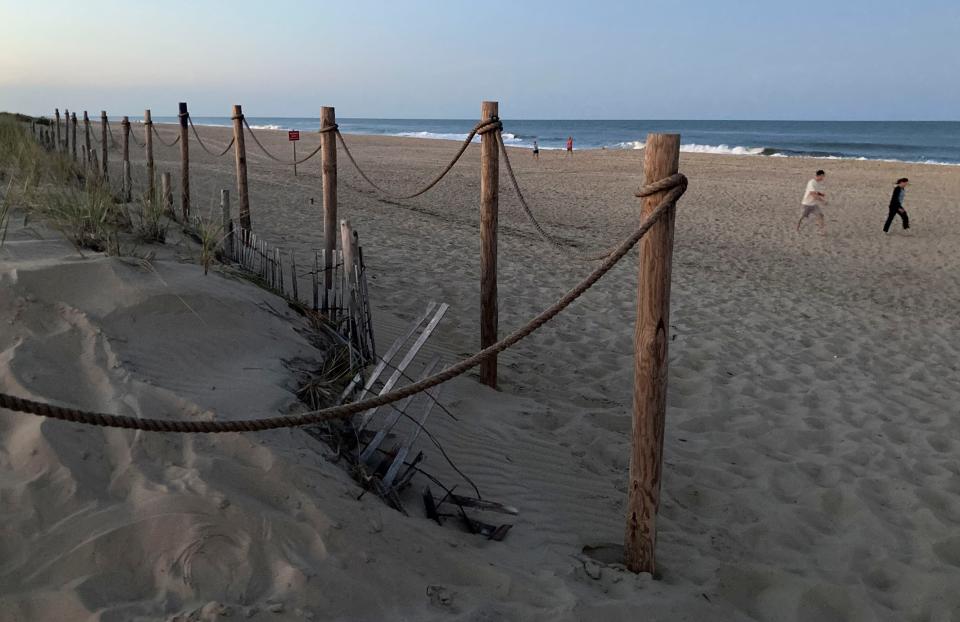
With 17 state parks across Delaware’s three counties, you can’t tell us there isn’t a place near you that doesn’t pique your space interest.
From White Clay Creek in New Castle County to First State Heritage Park in Kent County to Fenwick Island in Sussex County, there’s plenty of ground to cover when it comes to serene spots for solar viewings.
Delaware state parks close at sunset, but if you find yourself camping at one of them during a full moon or the next meteor shower, you’ll have plenty of time and space to enjoy the view.
Battery Park, New Castle
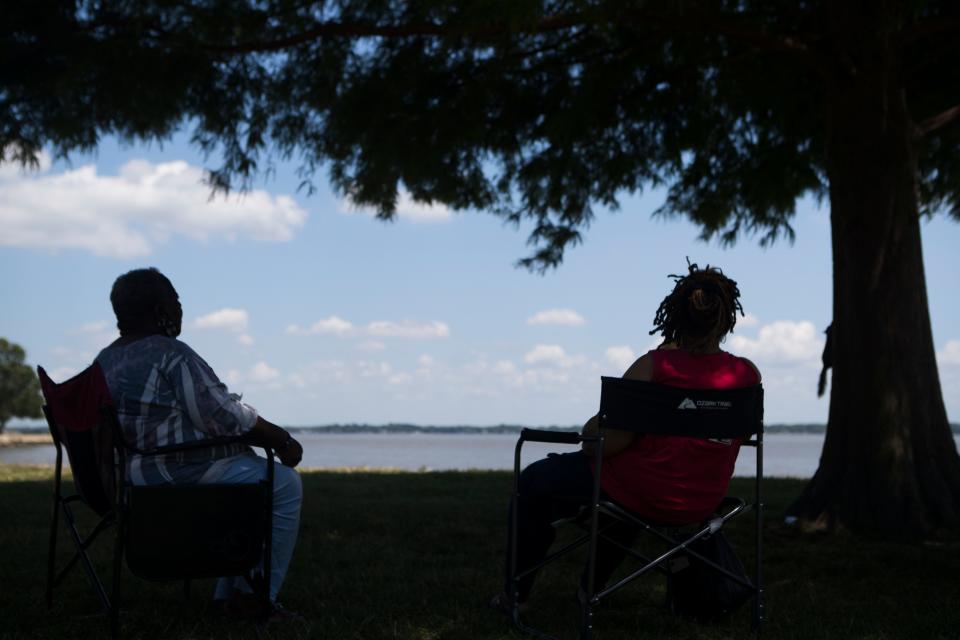
Located in New Castle, Battery Park borders the Delaware River and has walking trails, benches to sit on and an old pier.
Park your telescope in front of the nearest bench, sit back and enjoy the view. If you have time to spare, grab a bite to eat or check out some of the local shops and historic sites beforehand.
Got a tip or a story idea? Contact Krys'tal Griffin at [email protected].
January's wolf moon: Details on the next full moon, the wolf moon, and what to look forward to in February
Winter safety: Winter emergency car prep: What to keep in your car, check before driving this winter
ICYMI: This Delaware native has already won an Emmy for 'White Lotus.' (No, it's not Aubrey Plaza)
This article originally appeared on Delaware News Journal: Where can I see the solar eclipse? Here are the best spots in Delaware
